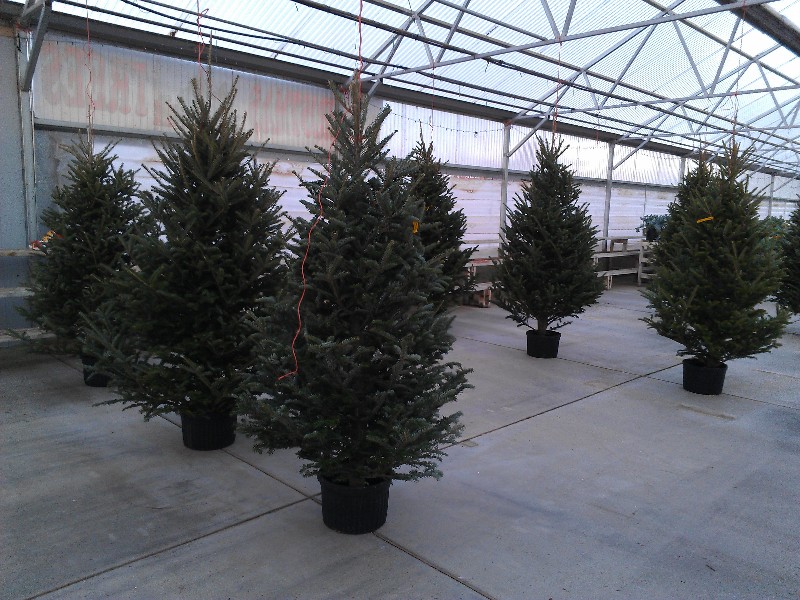One of the earliest memories many people have of the holiday season is that of the smell of a fresh cut Christmas tree.
Cut Christmas trees are probably the most highly used greenery in homes over the holiday season. If you are having guilty feelings about buying a cut tree- don’t! Today’s Christmas trees are specifically grown for this purpose and are replanted soon after harvest. While they are growing they clean and purify the air we breathe. After the holidays have passed they can be mulched or recycled in a number of other ways.
If you don’t go out and cut your own tree, there are some things to look for when buying your tree from a lot. Be sure that you choose the freshest tree that you can find. Cut trees should not be inside much longer than 2-3 weeks, so keep this in mind when making your decorating plans.
When shopping for your tree, take a few needles between your fingers and gently move your fingers towards one another. Needles that bend quite a bit before breaking are a sign of a freshly cut tree that has retained it’s moisture and will be a good choice. If the needles snap quickly, then the tree was cut long ago and you should choose another. Take a look at the ground under the tree as well. If there are lots of brown needles around it, or if the tree drops a lot of needles when it is given a good shake, move on to another.
Daily watering is the single most important care tip to keep your tree fresh and enjoyable throughout the season. There are tree preservative preparations available to add to the water in your tree stand that will aid in keeping the tree fresh.
Consider spraying your tree with an anti-dessicant that will help keep your greenery fresh and green throughout the season. We like a product named Wilt-Stop, but there are others available as well. This non-toxic spray coats your trees, greens and wreaths to help retain water in the needles. Available at most places that sell live greenery and trees, it also significantly reduces fire hazard as well.
You can recycle your cut tree in one of several ways. Branches can be cut off and laid in your garden to provide additional protection to your perennials and shrubs throughout the rest of the winter. Use the branches to decorate a window box to add some winter color. Sink a whole tree into a pond to provide habitat for fish. Chip it to use for winter mulch. After you’ve cut the branches off, use the trunk as a garden stake, as an edger for your garden or as a rustic trellis. Use the needles in a sachet. Use it as winter cover for wild birds. There are lots of ways to enjoy a real tree and still be a good steward for the environment.
If you choose a live tree for your Christmas tree, take this inside and decorate at the last possible opportunity. Live trees should not spend more than about 5 days inside in order not to break their dormancy. Before bringing the tree indoors it often helps to place it in a cool place such as a porch or garage for a few days in order to help it acclimate to the temperature changes. Keep it moist while indoors and water with ice cubes. After the holidays, put it outside in the garage or porch again to help it adapt to the temperature change and then plant it in the hole that hopefully you prepared in the fall before the ground froze.
While two thirds of the trees now used at Christmas are artificial, in my opinion, there’s nothing that takes the place of a real tree and it wouldn’t be Christmas in our house without one (or two!). Take this opportunity to rekindle childhood memories of the traditional sights and smells of holidays past with a real Christmas tree this year!

